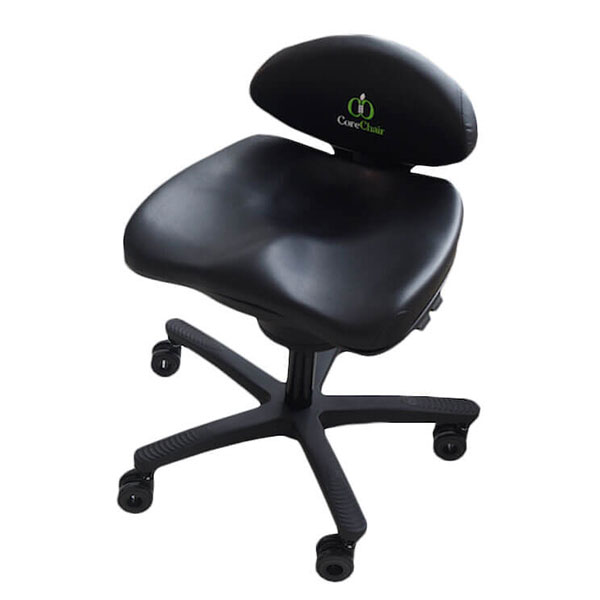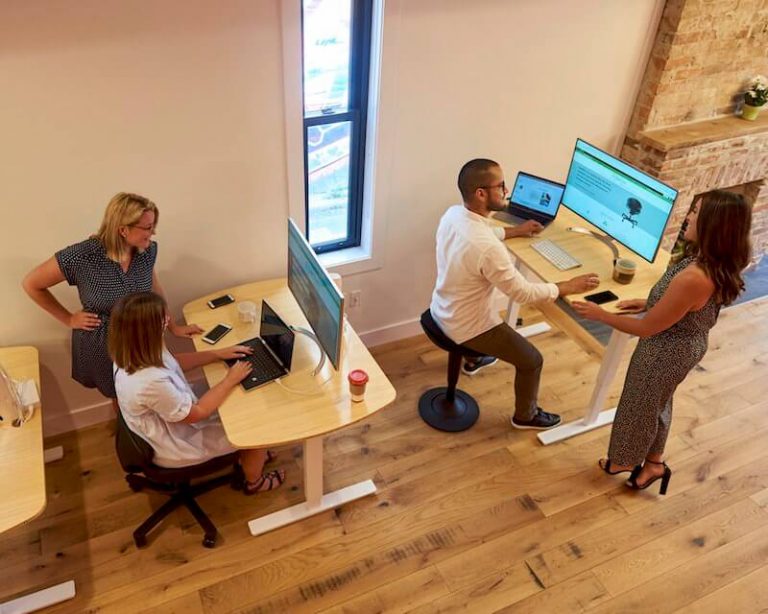There has been a lot of talk lately about the negative effects of sitting all day on our physical health, but what about what it’s doing to our brains?
There is a growing body of research that point to some of the hazards of sitting on the psyche. The reduced blood flow, lessened oxygenation and slowed metabolism of glucose within the brain means reduced concentration, creativity, problem solving; as well as reduced resilience in the face of stressful situations. New research is showing that something as minimal as fidgeting improves attention and working memory with children diagnosed with ADHD.
While education, research and good reasons are important in the education and awareness process, I want to take this a step further and invite you to have an experience of how sitting impacts your mind and body and how movement can be the antidote. As you read, I will invite you to engage your body to notice what is happening and to try some simple movements throughout.
As you sit, the mind stagnates as a result of reduced blood flow and a slowing of your metabolism which can result in a feeling of lethargy. Visually, your eyes keep the same perspective -perhaps your gaze is forward at the front of a meeting or towards your computer screen.
If it is possible, take a moment right now just to stand up and move your neck to look around the room and notice all the different perspectives you were missing. Mindfully become aware of different angles of the room with which you are familiar but perhaps have never looked at from these perspectives. Let yourself leave the trance of the sitting posture.
With movement, even as simple as standing up, you change your perspective and increase blood flow since the heart needs to work against gravity to ensure you don’t faint as you stand. The increase in blood flow and oxygenation that comes from movement facilitates broader perspective taking, problem-solving, creativity as well as learning. I once heard an expert chess player say that when he is stuck and unsure of what move to make he will stand up and walk to his opponent’s side of the table and from this vantage point, it soon becomes clear what to do.
Movement enhances our conscious awareness by stimulating our entire body; not just our heads to process information about ourselves, other people and the environment. Movement in this context is being spoken about as a new way of being throughout one’s entire day and not in the need to do any particular stretch or exercise. Really, it is not a ‘new’ way at all because our brains evolved in a context of movement (e.g., hunting, creating fire, inventing tools).
There are an infinite number of ways to apply the principle of movement in our lives. Standing and changing visual perspectives are just a few simple examples to begin the conversation. The aim is to utilize our selves in a fully embodied way where the mind and the body are not artificially separated but integrated as one whole throughout our day.
Movement as a mindset can be experienced quite easily the next time you find yourself sitting at your desk feeling stuck with a problem or stressed out. Here is a simple practice that you can use to move beyond stuckness:
- Give yourself permission to take a moment to stand up to change your perspective of the room and of the problem.
- Next, take 3 deep breaths and try to relax the body. Notice any tension in the body and try to use your breath to release it. Perhaps do a stretch by reaching your arms overhead or doing a forward bend. Let go of the problem for just a minute. Promise yourself you will return to it shortly.
- At the end of this minute or two return to your work and see what this moment of relief can do for you as you shift and move your mind and your body.
The most important element of this practice is first noticing what is happening inside your body and then moving to respond to it. You may not have a eureka moment but it is possible that you were able to let go of some of the excess tension that inevitably contributes to the stuck feeling and stagnant mindset.
All throughout the day, our bodies give us information about how we feel; whether it is an emotion, hunger, stiffness, or fatigue. Our bodies also provide information about the work that you’re doing and what it feels it needs to happen next. Processing of experience doesn’t just happen through the linear problem solving parts of the brain. A large part of our consciousness is based in our felt experience (body consciousness), which processes information very quickly and holistically (see Malcolm Gladwell’s book Blink for more).
We need to find ways of integrating movement practice throughout our day not just because it is incredibly important for our physical health but also because it powers our ability to create. By moving our body throughout the day, we not only prevent the deterioration of the body and a growing list of diseases, but we can use the power of movement to enrich our work by stimulating higher levels of thinking, increasing energy and improving mood.
Tim Sitt, Personal Trainer and Psychotherapist, is the CEO/Founder of ThinkMOVE. Using a personalized approach, the MOVE program teaches various skills and exercises that participants can do throughout their day to help them move their bodies, minds, relationships and their work to new heights.











